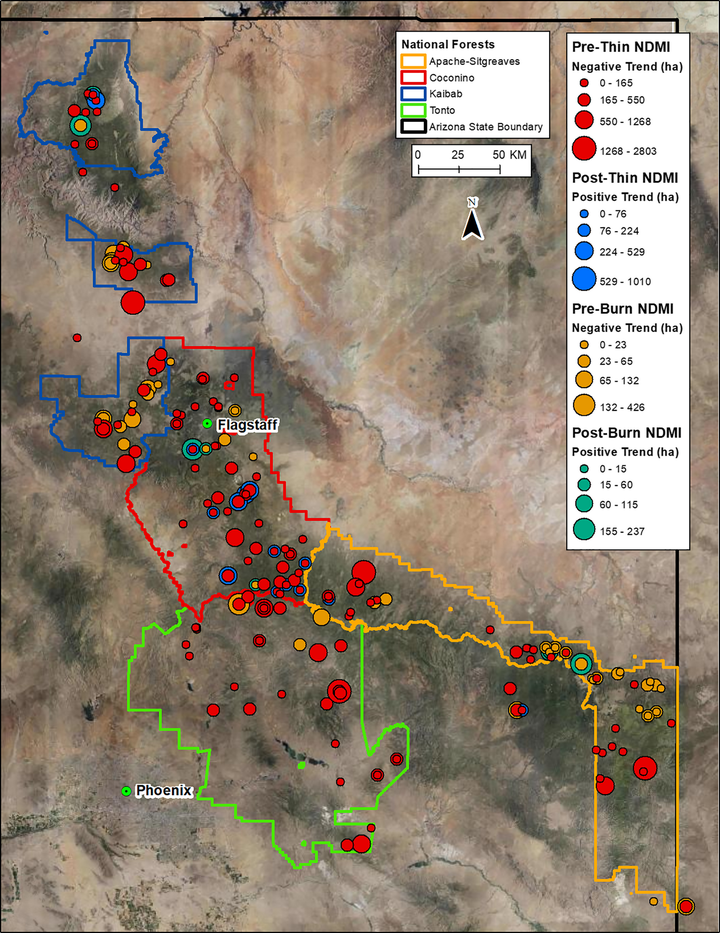Regional-scale forest restoration effects on ecosystem resiliency to drought: a synthesis of vegetation and moisture trends on Google Earth Engine

Abstract
Large-scale changes in forest structure and ecological function throughout western North America have led to increased frequency, size, and severity of wildfires. The US Forest Service is implementing state-wide forest restoration initiatives to reduce wildfire hazards and improve forest health. We provide a synthesis of pre- and post-treatment forest vegetation and ecosystem moisture trends between 1990 and 2017 in Arizona, the first US state where the initiative has implemented a variety of thinning and burning methods in over 1,200 polygon areas across 3.5 million ha. Using 4,426 Landsat satellite images on Google Earth Engine, we calculated normalized difference moisture index (NDMI), normalized difference water index (NDWI), and normalized difference vegetation index (NDVI) to create dense time-series datasets. The indices and 1990-2017 annual total precipitation dataset were then examined using a Mann–Kendall tau test to identify statistically significant upward and downward trends for each pixel. Our results indicate that much of the study region were experiencing drought conditions prior to restoration treatments and NDVI values were significantly decreasing, especially during the dry spring season. However, both NDMI and NDWI trends indicate that the forest restoration treatments have contributed to increased total ecosystem moisture, while precipitation in the post-treatment period exhibit stable trends. Forest restoration treatments appear to have improved the overall forest health and resiliency to drought, especially during the dry spring season, when forests are most vulnerable to water stress and wildfire risks. Our results of the spatial patterns and long-term trends in these variables can inform the currently ongoing and future restoration treatments to better target the treatment strategy across the southwestern USA. Google Earth Engine enabled our synthesis of these long-term trends over the large region and will enhance our continued monitoring in the coming decade.